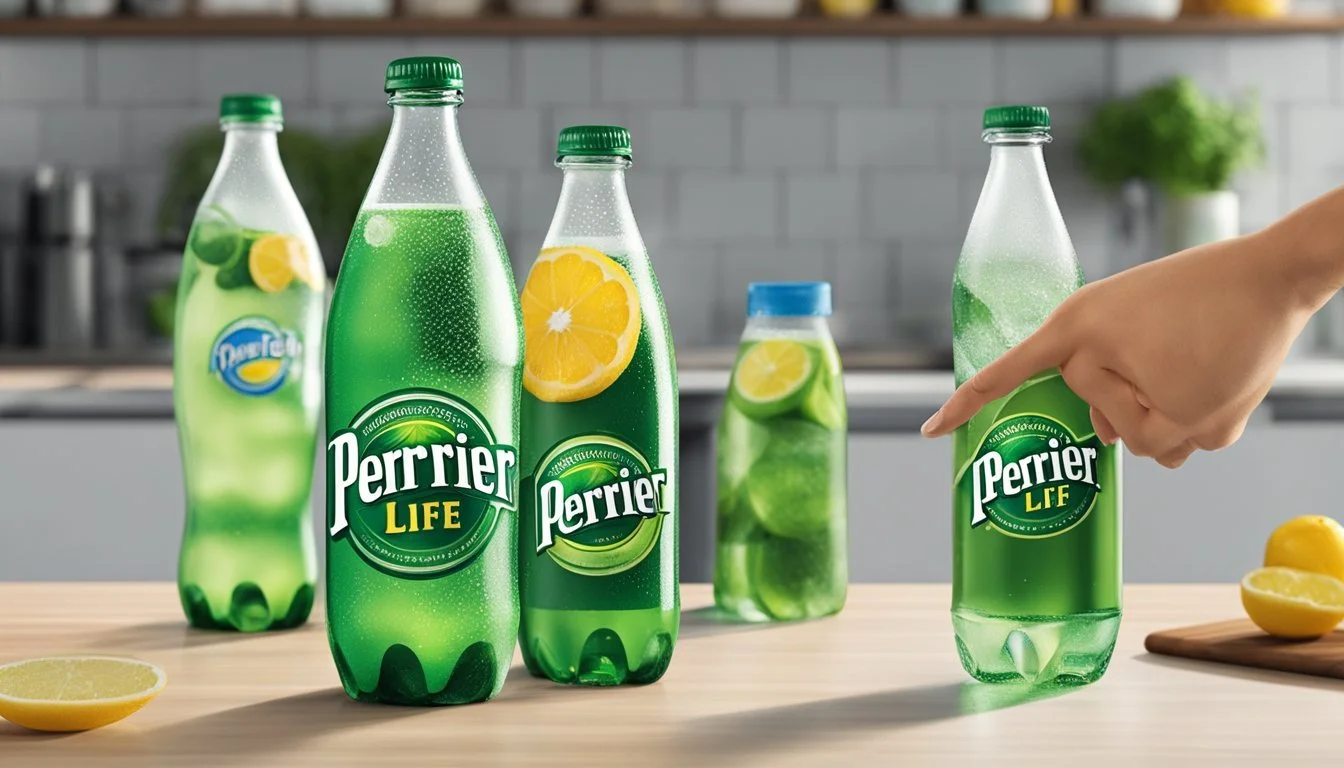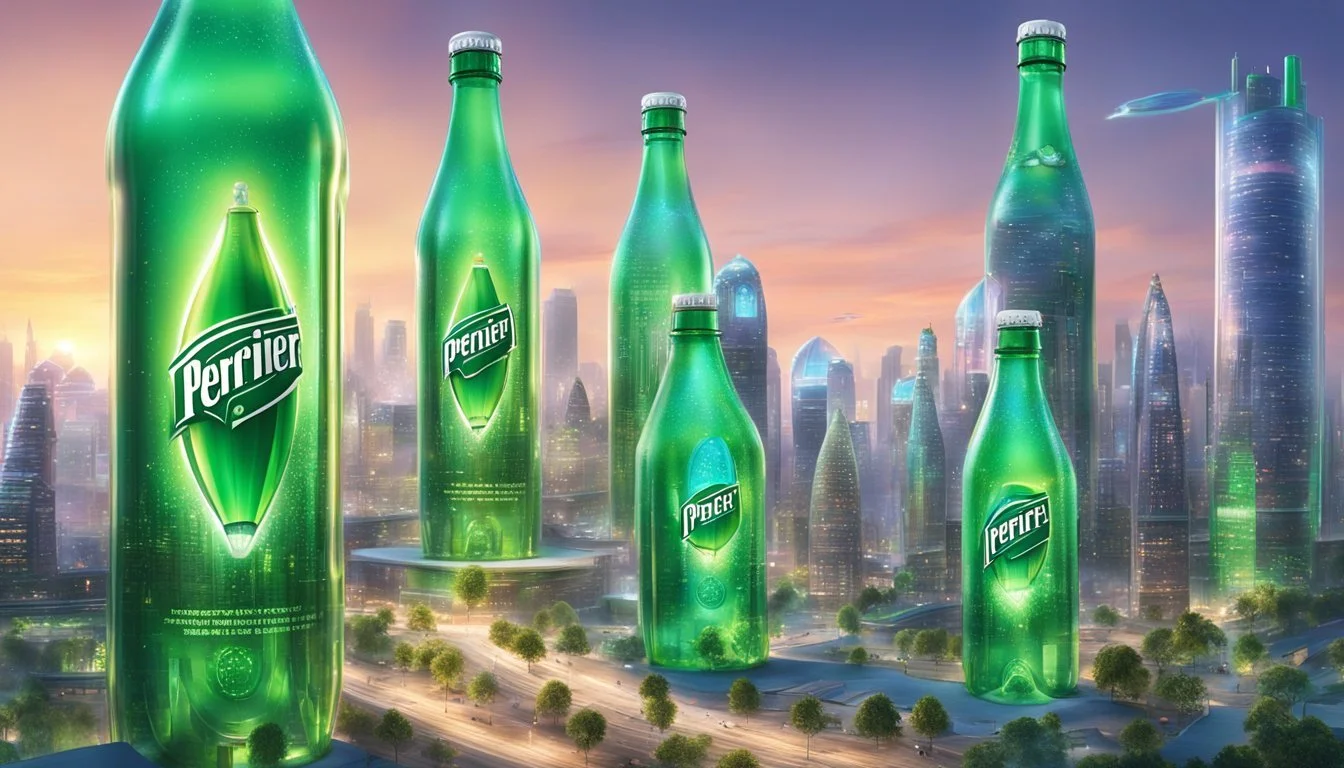Perrier vs. Pure Life
Which Bottled Water is Better for You?
Choosing between Perrier and Pure Life can seem daunting given the choices available in the bottled water market. Both brands offer unique characteristics, appealing to different preferences and needs. Perrier, known for its sparkling texture and mineral-rich taste, caters to those who prefer a bubbly and slightly more intense flavor.
Pure Life, on the other hand, is marketed as a purified water option, often chosen for its clean, neutral taste. It undergoes a rigorous purification process, ensuring consistency and quality in every bottle. This choice is ideal for those who seek simplicity and reliability in their hydration.
By comparing these brands side-by-side, one can better understand which might suit their lifestyle and preferences more effectively. Each offers distinct advantages, making the decision ultimately dependent on personal taste and requirements.
The Bottled Water Industry
The bottled water industry is a significant sector within the beverage market, dominated by various brands and regulated by strict standards. This section will cover key bottled water brands, the market's growth, and regulatory frameworks.
Overview of Bottled Water Brands
The bottled water market is populated by numerous brands, each with its unique selling points. Notable brands include Dasani and Aquafina, both owned by Coca-Cola and PepsiCo respectively. Fiji Water offers water sourced from an artesian aquifer in Fiji, appealing to consumers seeking natural and pure water.
Evian and Perrier, from the French Alps, are known for their mineral-rich and sparkling qualities, respectively. Nestlé Pure Life is a leading product under the extensive Nestlé portfolio, which also includes water brands like Poland Spring and San Pellegrino. The diversity in branding reflects the varied consumer preferences and market segmentation.
The Rise of the Bottled Water Market
The bottled water market has seen significant expansion in recent decades. Rising health consciousness and the desire for convenient hydration options have fueled this growth. Brands like Nestlé and Coca-Cola have leveraged their extensive distribution networks to capture market share.
Emerging markets in Asia and Latin America contribute to this surge, with increasing urbanization and disposable income driving demand. Key players target these regions through strategic marketing and localizing production. Environmental concerns have also led to innovations in packaging, with a shift towards recycled and biodegradable materials.
Regulations and Standards
The bottled water industry is stringently regulated to ensure quality and safety. In the United States, the FDA oversees bottled water, applying standards comparable to those for public water systems regulated by the EPA. Water brands must meet specific labeling, processing, and safety requirements.
Internationally, organizations like the International Bottled Water Association (IBWA) provide guidelines and certifications promoting best practices. Adherence to these regulations helps maintain consumer trust in bottled water products. Regular testing for contaminants, adherence to hygienic bottling processes, and transparent labeling are crucial for compliance.
Sourcing and Processing
In the face-off between Perrier and Pure Life, understanding how each brand sources and processes its water can provide clarity on their differences. This section covers the type of water each brand uses, their specific treatment methods, and the environmental impact of their production practices.
Spring Water Vs. Purified Water
Perrier sources its water from a natural spring in Vergèze, France. This mountain spring water is naturally carbonated and is famous for its mineral content, giving Perrier its distinctive taste.
Pure Life, on the other hand, uses purified water. It often starts from a municipal source and undergoes a thorough filtration process to remove impurities.
Spring water like Perrier's is valued for its natural minerals and taste. Pure Life's purified water is praised for its consistency and cleanliness.
Filtration and Treatment Methods
Perrier employs minimal treatment, relying on natural filtration through rock and sand to maintain its purity. The water is then lightly carbonated at the source to match its natural effervescence.
Pure Life implements a multi-step purification process, including reverse osmosis, carbon filtration, and ultraviolet light treatment. This rigorous procedure ensures the water is free from contaminants.
While Perrier emphasizes minimal intervention to preserve natural qualities, Pure Life focuses on achieving a uniform taste and high purity through advanced filtration.
Environmental Considerations
Perrier is committed to sustainable practices, including protecting the aquifers and the surrounding environment of its spring. The company also invests in recycling programs and aims to reduce its carbon footprint.
Pure Life likewise prioritizes sustainability, using eco-friendly packaging and improving water efficiency at its plants. However, the reliance on municipal water sources raises concerns about long-term water resource management.
Both brands are making strides in reducing their environmental impact. Perrier focuses on preserving natural sources, while Pure Life works on reducing waste and enhancing sustainable practices in its production cycle.
Health and Safety
Understanding the health and safety aspects of Perrier and Pure Life bottled waters is crucial. Here's an in-depth look at the minerals and electrolytes, contamination risks, and the hydration benefits associated with each brand.
Minerals and Electrolytes in Water
Perrier and Pure Life offer distinct mineral profiles that contribute to their health benefits. Perrier is well-known for its natural carbonation and rich mineral content, including magnesium and calcium, which support bone health and muscle function.
Pure Life, on the other hand, is purified through a rigorous process that removes most naturally occurring minerals but often has sodium added to improve taste. Both waters offer essential electrolytes, which are vital for maintaining the body's fluid balance and supporting public health.
Contamination Risks
When it comes to contamination, both brands adhere to strict safety standards. Perrier sources its water from natural springs, which are regularly tested for contaminants like lead and heavy metals. Yet, occasional recalls indicate that vigilance is necessary.
Pure Life undergoes extensive purification, including reverse osmosis and carbon filtration, to eliminate potential contaminants such as bpa (Bisphenol A) and arsenic. While tap water can sometimes contain trace contaminants, bottled waters like these are generally subject to stringent quality controls to ensure safety.
Hydration and Health Benefits
Both Perrier and Pure Life are effective for hydration, but their unique properties offer different advantages. Perrier's carbonation can make drinking water more enjoyable for some, potentially increasing daily water intake. This sparkling water's mineral content also provides slight health advantages by delivering essential nutrients.
Pure Life offers clean, purified water without the bubbles, which might be preferred by those who dislike carbonation or are looking for a neutral-tasting hydration option. Both brands support overall hydration and contribute positively to health by ensuring adequate fluid intake, crucial for all bodily functions.
In summary, whether one chooses Perrier or Pure Life often hinges on personal preferences regarding taste and mineral content. Each brand provides safe, high-quality hydration solutions.
Comparing Perrier and Pure Life
The choice between Perrier and Pure Life often comes down to personal preference regarding taste, quality, and accessibility. This section explores key aspects of each brand to help consumers make an informed decision.
Taste and Quality Analysis
Perrier is renowned for its natural carbonation and distinctive mineral taste. Sourced from Vergèze, France, it offers a unique bubbly sensation and a slightly salty flavor due to its mineral content.
On the other hand, Nestlé Pure Life is a purified water, stripped of impurities and enhanced with a balanced mineral composition. It tends to have a neutral taste, making it a versatile option for those who prefer their water plain with no distinct aftertaste.
Product Range and Accessibility
Perrier's range includes various flavored sparkling waters, such as lime, lemon, and grapefruit. This variety appeals to consumers looking for a refreshing, flavored option. Perrier is widely available in grocery stores, cafes, and restaurants worldwide.
Pure Life focuses on purified still water but also offers flavored options and products aimed at children. Widely available in supermarkets, convenience stores, and larger retailers, Pure Life’s extensive distribution network ensures it's easily accessible to consumers across different regions.
Price Point and Consumer Preference
Perrier is often viewed as a premium brand, reflecting in its higher price point. Its unique taste profile and reputation for quality make it a luxury choice among sparkling water enthusiasts.
Pure Life, positioned as a more affordable option, caters to a broad consumer base. The lower cost, combined with the wide availability and trusted brand reputation, makes Pure Life a popular choice for everyday hydration needs.
By comparing specific elements of taste, product range, and pricing, consumers can better determine which brand aligns with their preferences and lifestyle.
Consumer Insights
Consumers consider various factors like market trends, purchase drivers, brand reputation, loyalty, and customer feedback when choosing between Perrier and Pure Life.
Market Trends and Purchase Drivers
Market trends show a growing preference for sparkling water, benefiting Perrier, known for its carbonation and unique taste.
Pure Life serves a different niche, focusing on affordability and widespread availability. It targets consumers seeking pure, distilled water for daily hydration.
Environmental concerns, public health, and corporate malfeasance also impact purchase decisions. Buyers are increasingly aware of the environmental footprint of bottled water. Investigative journalists have highlighted issues such as plastic waste and water source sustainability, urging consumers to make eco-friendly choices. Brands that promote sustainable practices often get favorable attention and higher sales.
Brand Reputation and Loyalty
Perrier has a longstanding reputation for premium sparkling water. Its association with luxury and a sophisticated lifestyle has garnered a loyal customer base.
Pure Life, by contrast, is known for its extensive distillation process and global reach. It appeals to cost-conscious consumers prioritizing safety and quality in daily hydration. Public health studies and transparency about sourcing increase loyalty.
Brand reputation is also influenced by corporate behavior and public perception. Investigations into corporate malfeasance can harm reputations. Staying committed to ethical practices and transparency can enhance brand loyalty and reputation.
Customer Reviews and Feedback
Customer reviews for Perrier often highlight its refreshing taste and effervescence. Many appreciate its elegant packaging and unique experience, making it a popular choice for social occasions.
Pure Life receives praise for its clean taste and reliable quality. Customers often mention its affordability and ease of availability.
Consumer Reports and other platforms sometimes identify issues like the presence of PFAS chemicals, impacting customer perceptions negatively. Honest and prompt responses to such findings can help maintain trust. Monitoring and addressing feedback through consistent quality checks can improve customer satisfaction and brand loyalty.
Environmental and Ethical Considerations
When choosing between Perrier and Pure Life, understanding their environmental and ethical commitments is essential. Examining their sustainability efforts and the impact on natural resources provides a clearer perspective on each brand's approach.
Sustainability and Recycling Initiatives
Perrier places a strong emphasis on sustainability. They utilize recycled PET (rPET) bottles, aiming for 100% recyclable packaging. The company has initiatives to reduce carbon footprints during the bottling process and transportation.
Pure Life, produced by Nestlé, also makes efforts towards sustainability. Nestlé has committed to making all its packaging recyclable or reusable by 2025. Their Eco-Shape® bottles are lighter and require less plastic, contributing to reduced environmental impact.
Both brands are working towards reducing plastic waste and increasing recycling rates. Efforts include raising consumer awareness regarding proper disposal and recycling practices. Such campaigns can decrease the environmental burden caused by discarded bottles.
Impact on Natural Resources
Perrier sources its water from a natural spring in France. This method maintains water quality but can stress local ecosystems if not managed sustainably. The brand emphasizes careful management of the spring to prevent depletion.
Pure Life's water undergoes a multi-step purification process. Nestlé's large-scale operations necessitate substantial water extraction, which can strain natural resources. Criticism has arisen regarding their practices in areas facing drought and water scarcity.
Ethical sourcing and transparent water management are crucial for both brands. The impact on ecosystems and communities depends significantly on how water resources are allocated and managed responsibly.
Future Outlook and Innovations
The bottled water industry is evolving rapidly, with technological advancements and emerging challenges shaping its future. As brands like Perrier and Pure Life innovate, they also face opportunities and obstacles.
Advancements in Bottling Technology
Bottling technology continues to improve, focusing on sustainability and efficiency. Perrier is exploring eco-friendly packaging, aiming to reduce plastic use. They invest in biodegradable and recyclable materials, enhancing their environmental impact.
Pure Life is also prioritizing new technologies, focusing on water purification techniques. They aim to streamline production processes while maintaining high water quality. Smart bottling systems with real-time quality monitoring are becoming integral, ensuring consistent product standards.
Innovations in labeling and bottling designs are also prominent, with both brands emphasizing user-friendly and attractive packaging. These advancements play a critical role in consumer preferences and brand differentiation.
Challenges and Opportunities Ahead
The industry faces several challenges, such as environmental concerns and regulatory pressures. Perrier faces scrutiny over its carbon footprint and is committed to increasing its renewable energy use in production.
Pure Life contends with ensuring high purification standards amidst varying global water qualities. This challenge prompts them to innovate and develop more robust purification technologies.
Opportunities for growth exist in expanding market reach and product diversification. Both brands are exploring flavored and fortified water options, catering to evolving consumer tastes. There's also potential in tapping into underrepresented markets, driving global expansion.
Balancing innovation with sustainability and regulatory compliance remains a pivotal focus for these brands, shaping the future landscape of bottled water.
More About Perrier
Icelandic Glacial vs Perrier: Which Bottled Water is Better?
Mountain Valley Spring Water vs Perrier: Which Bottled Water is Better?
Perrier vs Kirkland Signature: Which Bottled Water is Better?
Perrier vs Richard's Rainwater: Which Bottled Water is Better?
Perrier vs Whole Foods Italian Still Mineral water: Which Bottled Water is Better?
More About Pure Life
Cascade Mountain vs Pure Life: Which Bottled Water is Better?
Hawaii Volcanic vs Pure Life: Which Bottled Water is Better?
Hawaiian Springs vs Pure Life: Which Bottled Water is Better?
Icelandic Glacial vs Pure Life: Which Bottled Water is Better?
Nestle Pure Life vs Pure Life: Which Bottled Water is Better?
Pure Life vs Kirkland Signature: Which Bottled Water is Better?
Pure Life vs Whole Foods 365: Which Bottled Water is Better?
Richard's Rainwater vs Pure Life: Which Bottled Water is Better?
Solan de Cabras vs Pure Life: Which Bottled Water is Better?
Talking Rain AQA vs Pure Life: Which Bottled Water is Better?
Whole Foods Italian Still Mineral water vs Pure Life: Which Bottled Water is Better?






